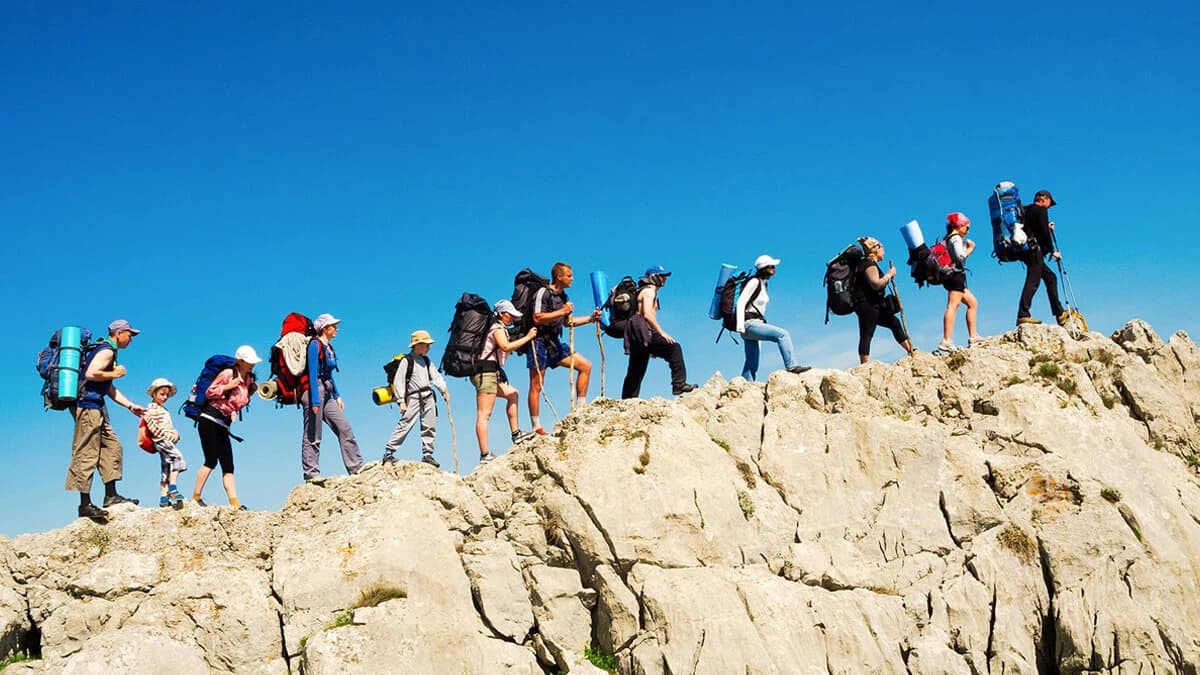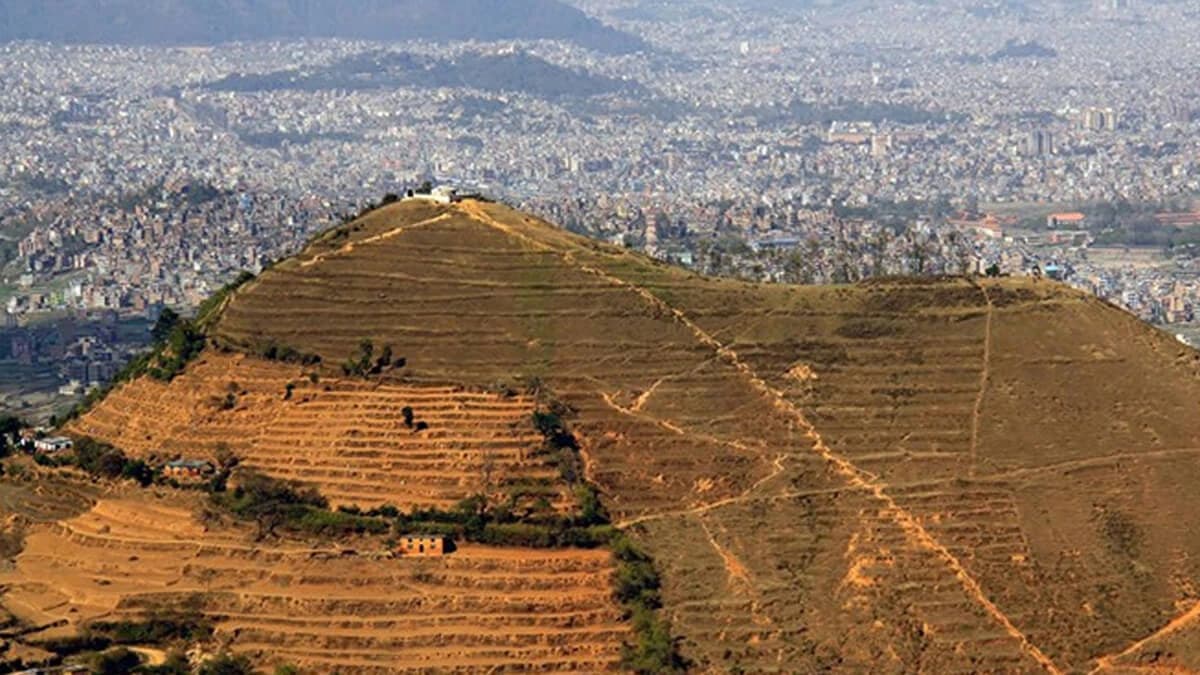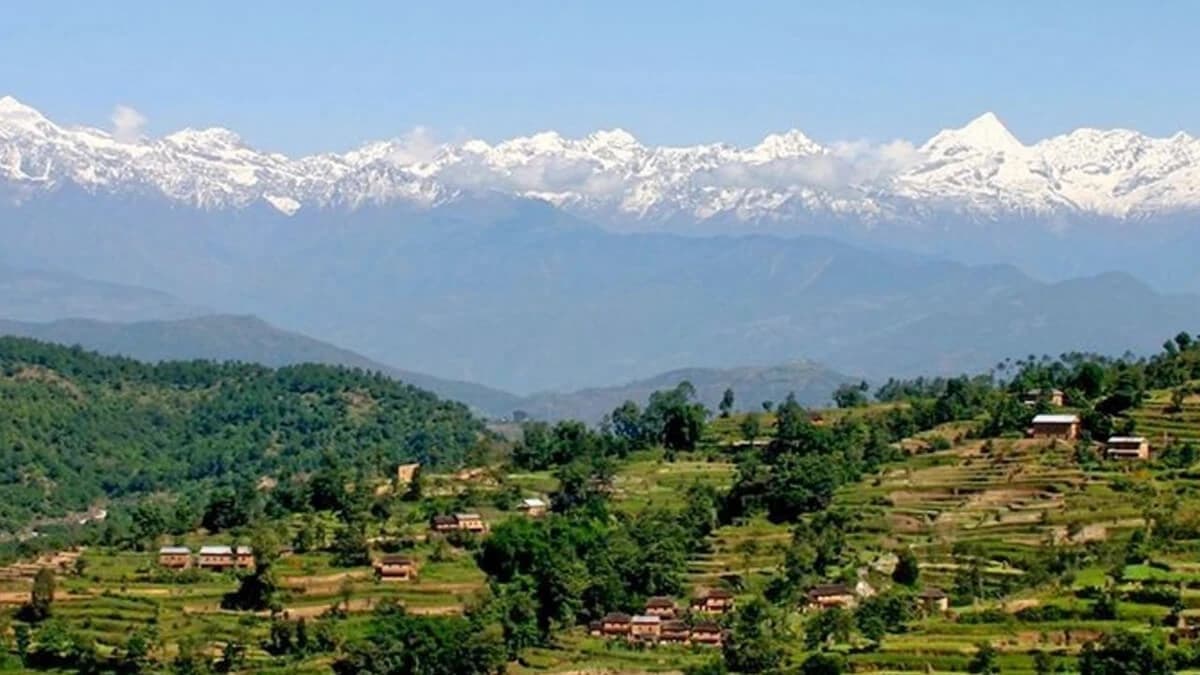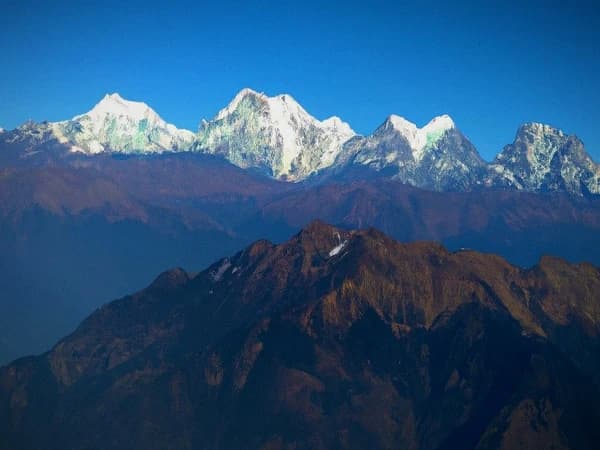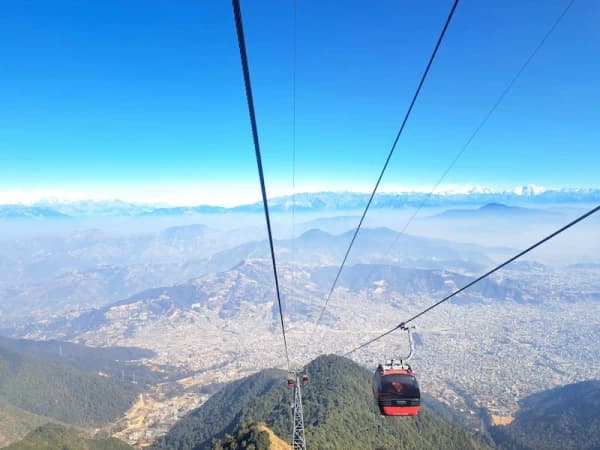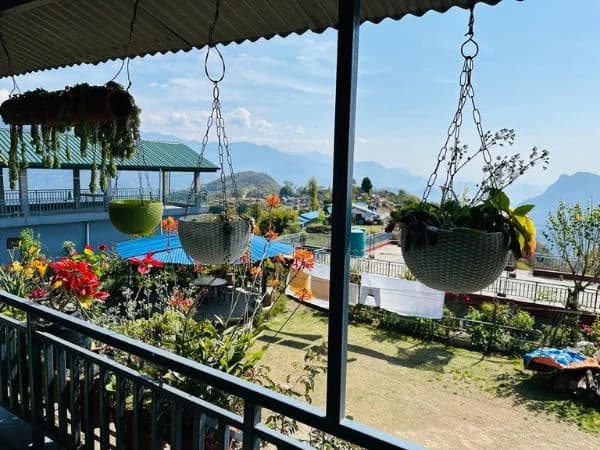Nepal being the centre of Himalayan range with unparallel mountains with worlds 8th highest peaks has more to offer, we at Trekking Guide Team Adventure offers a leisure walk and hike in and hike around Kathmandu valley for people with limited times in Nepal and still wants to feel the closeness of snow capped mountains with natural fresh air and to escape the hustle bustle of city life for few days and more as per your requirements. Short hiking in Kathmandu is famous for both local and international tourists in Nepal.
We have choice of scenic and cultural country walks and hikes for you to take delight in our various pleasant hikes with tours, this is a perfect choice for families, school and college group and for corporate people who needs a change of scene and fresh air after being in the closed city area.
Option no. 1
Sundarijal to Dhulikhel via Chisopani/Nagarkot 03-04 day’s trip
A great hike and trek or a country walk for those wants to escape the daily busy city life on the outskirt of Kathmandu Valley rim hills not too far from the motorable road but yet still far from the maddening crowd this trip begins with a short drive on the outskirt of Kathmandu Valley at Sundarijal a wonderful enchanting spot with cool shade of rhododendron, pines, oaks forest and the watershed that provides drinking waters to Kathmandu city and an headquarter of Nepal Scouts, this area onwards is protected by Shivapuri Conservation where a small fee is charged at the entrance on route. Chisopani leads with a all types of the beginners and family who wants to escape the busy life of Kathmandu for few days in the tranquility of the serene forest, visiting rural life as it was for centuries.
This nice peaceful trek starts with a short drive to Kakani, a countryside village on the north west of Kathmandu Valley rim, the walk from here follows the ridge that outlines Kathmandu Valley with superb view of the surrounding landscapes and snow capped range from Mt. Annapurna, Manaslu, Ganesh to Langtang, the trek continues towards the south east of the Valley ridge at Dhulikhel via the famed mountain view spots of Nagarkot and Dhulikhel where one can view the sunrise and sunset over the panoramic Himalayan snow range from Annapurna to Everest. Our pleasant walk on the gradual winding path leads downhill overlooking grand Himalayan chain of mountains all the way to Dhulikhel another hill resorts where one can have panorama of high hills and mountains, this is one of the best mountain resorts around the valley rim for the panoramic view of the Jugal mountain region. This old Newar town lies beyond the eastern rim of the Valley with comfortable lodging for extended trips.
Nagarkot
Among all the places for mountain viewing in the Kathmandu Valley, Nagarkot is usually considered to be the best. The views go from Dhaulagiri in the west to Kanchenjunga in the east. On a clear day you can see Mt. Everest (Sagarmatha). You can also see Manaslu (8,463m), Ganesh Himal (7,111m) and Langtang (7,246m). Many people go up to Nagarkot in the afternoon, stay in a hotel in Nagarkot and then, get up at dawn to see the Himalaya Mountains during the sunrise.
Nagarkot is 32 kilometers east of Kathmandu, on the northeast edge of the Valley at an elevation of 2,175m. It is best to view the mountains in the early morning because it is more likely to be clear. There is a viewing tower next to the Club Himalaya Resort, where you get good views that has a coffee shop where you can sit inside. Many of the hotels also have good views.
There is a lookout tower south of the village where you can get a 360º view of the scenery. It is an easy one hour walk from the main hotel area. To get there, you have to pass an army checkpoint, and they will only let you past in the morning. You can go to Nagarkot in the afternoon and stay over night and view the mountain at sunrise.
You can usually get a good view of the mountains between October and March. During the monsoon from June to September, it is unlikely to get a view of the mountains. Nagarkot can be much colder than in Kathmandu, especially in the winter. There are some pleasant walks in the area. There are several good walk to or from Nagarkot. Many people take a bus or taxi up to Nagarkot and then walk down. Some good walks are down to Sankhi, Sundarijal, Changu Narayan, Bhaktapur or to Banepa.
You have to pass through Bhaktapur to get to Nagarkot, so you could go to Bhaktapur in the early afternoon and go to Nagarkot for the sunset or to stay overnight. Most people stay here for just one night. The main area of town is just a group of hotels.
- Day 01: Trek to Chisopani (2,340m) for 5 hrs.
- Day 02: Trek to Nagarkot for 6 hrs.
- Day 03: Trek to Dhulikhel approx. (1,550m) for 6 hrs.
- Day 04: Visit Namobuddha and drive to Kathmandu Bhaktapur.
Bhaktapur or Bhadgaon “The city of Devotees”
Bhaktapur is the third largest city in the Kathmandu valley. The city was once the capital of Nepal during the great Malla Kingdom from the 12th to the 15th century. Four square miles of land situated at an altitude of 1,401 meter from sea-level is a home to traditional art and architecture, pottery and weaving industries, rich local customs and culture and the everyday life of Bhaktapur people. All that and more will have you visit this untouched ancient city more than once! Nepal’s Malla dynasty’s achievements in arts and crafts are reflected throughout the Bhaktapur city. Bhaktapur is also known by woodcarving artists, for it’s cap known as Bhadgaon Topi and for its curd known by Nepalese and popular for its delicious mouthwatering taste as the ‘Bhaktapur ko Juju Dahi’ (meaning Curd made in Bhaktapur). Tourists visiting the city also take the time to relax and observe other interesting happenings in the city such as children’s playing outside their home and in temple yards, busy and colorful open markets, women’s making clay-pots, weaving, and sun-drying crops and vegetable products. Bhaktapur is located at 14 km east of Kathmandu.
Bhairavnath Temple of Bhaktapur
- Bhaktapur Durbar Square
- Bhaktapur Naytapola Temple
- The Bhaktapur National Art Gallery
- Bhairavnath Temple of Bhaktapur
Option no. 2
A day hike to Shivapuri Danda-Ridge (2,563m) for 5 hours
Budhanikantha
Shivapuri wild life conservation and a watershed of Kathmandu city, about 8 kilometers north of Kathmandu, at the base of Shivapuri hill is a remarkable colossal statue of Lord Vishnu, reclining of the bed of snake. This is one of the masterpieces of stone sculptures of Lichchhavi period. This 5th century statue is in the middle of a small pond and seems to float in water.
In the morning, hike towards the northern highest point at Shivapuri ridge. Walk follows on the gradual path for sometime, with a last portion of steep climb to the Shivapuri ridge. Shivapuri provides most of the water supply to the Kathmandu Valley and among the hills; it is closest to the high Himalaya. The wildlife sighting here is also excellent as the park has access to wider lands and areas behind Kathmandu Valley.
Namo-Buddha
One of the unsurpassable supreme sacred sites known as the Three Stupas in Nepal is Tagmo Lüjin (The place where the future Buddha sacrificed his body to a tigress). It is the very sacred place where our teachers, the perfect and supreme Buddha-at that time still on the path of learning-offered his own body without regret to a tigress suffering from great hunger. What follows is a history of this supreme and distinguished sacred site, whose location is unmistaken based on the clear identification given in the Sutra requested by the Tigress and so forth.
A long time ago, there was a king in this world with the name of Great Vehicle. He ruled over nearly five thousand vassals and had three sons, the eldest of whom was called Great Sound, the middle, Great Deity and the youngest, Great Sentient Being. From childhood, the youngest son was of a loving and compassionate nature. To everyone, he was like a beloved son. One time, the king went outside for a walk together with his ministers, his queen and his sons. Then, while they rested a little while, the three sons strolled in the woods. They saw a tigress that had given birth to cubs and was so exhausted by days of hunger and thirst that she was on the verge of eating her young. The youngest prince said to his two elder brothers, “This weak and meager tigress is at the edge of death, and suffering so that she would even desire to eat her own offspring.” When the younger brother asked his two elder brothers: “What does the tigress eat?” the two elder brothers replied, “She eats freshly killed meat and drinks blood.” Then he said: “Who has such strength that they would not to fail to save her life by giving her these things?” The two brothers replied: “Nobody as it is extremely difficult.”
The younger brother thought: “For a long time I have been wandering in samsara wasting innumerable bodies and lives. I have given up my body sometimes to desire, sometimes to anger and sometimes to ignorance. What is the use of this body which for the sake of Dharma has not even once engaged in merit?” Once he had made up his mind in this way, the three had not walked very long together on their way back, when he said to his two elder brothers, “You two brothers go on ahead. I have something to do and shall come later.” Returning back along the path, he swiftly returned to the lair of the tigress and lay down in front of her, but the tigress could not bite and eat. Thereupon, the prince took a sharp branch and made blood flow from his body and let the tigress lick it. She then opened her mouth and completely devoured the flesh of his body.
His two brothers waited for a long time and still their younger brother had not come back, so they returned to look for him. Considering the way he had talked, they thought that he had most certainly fed the tigress [with his body]. When they got there and looked, they saw that he had been eaten by the tigress that was lying in his flesh and blood, and they fell to the ground in a faint. Regaining consciousness after a while, they cried and fainted again.
At that moment, the queen dreamed that three pigeons had been flying and playing, and that a falcon had caught the youngest. She woke up immediately and terrified, told the king, “I have been told that a pigeon is the soul of a son. I dreamed that a falcon caught the youngest of three pigeons, so something unfortunate has certainly befallen the most beloved of my sons.” Immediately he ordered a thorough search and not much later, the two elder brothers returned. The queen asked them, “Is there not something wrong with the most beloved of my sons? What is it?” The two brothers´ speech faltered and for a long while they could not even exhale and remained speechless. When they finally breathed out, they reported, “He was eaten by a tiger.” When the queen heard this she fainted, falling to the ground. A long while elapsed and when she regained consciousness, the two sons, the queen and the entire entourage proceeded swiftly to the place where the prince had expired. They saw nothing but bones and blood as the tigress had completely consumed the flesh of the prince. The queen held her head and the king, holding her in his arms, wept and cried. He, too, fainted and it took a long time till he regained consciousness.
Having died in this place, the Prince Mahasattva was reborn in the Tushita realm of gods. He wondered, “Through what positive action was I born here?” and started to search with his divine eye through all five realms. In a forest, he saw the bones he had left behind, which were surrounded by his parents who, out of their great love for their son, were weighed down by great grief. He thought, “When my parents are so sad, obstacles will be created for their body and life. I shall go and reassure them.”
He descended from heaven and reassured his parents with many pleasant words from the heavens above. The parents looked up into the sky and said: “Deva, tell us who you are!” The god said: “I was your son Mahasattva.” Having fed the tigress with my body, I was born in the Tushita realm of gods. Great King, know this! Whatever has come into existence will meet with destruction in the end. When there is arising, there is certainly destruction. If they engage in negative actions, sentient beings will fall into hell. If they engage in virtuous ones, they will take rebirth in the higher realms. Arising and destruction affects everything. Why then are you experiencing an ocean of suffering just because of me? Strive for virtue!”
His parents said, “Out of great compassion you gave your body to the tigress. If you have love and compassion for everyone, extend it also to us! When we think of you, your death causes us such distress, just as if our flesh were being cut, so should not you, great Compassionate One, refrain from acting towards us like that?” Again the god placated and encouraged his parents with many pleasant words. Being a little comforted, they made a casket of seven precious jewels, put his bones inside and buried it. Above they erected a stupa.
Option no. 03
Kathmandu day hike tour
A day hiking to Phulchowki (2,782m)
A perfect place to see vegetation (Botanical Garden) and also famous for bird watching: A great day hike to escape the city life for few hours an hour drive leads to the south east of Kathmandu Valley and Lalitpur and only away from the capital, from Godavari hike for few hours to the top ridge of Phulchowki the highest elevation around Kathmandu Valley rim at 2,782 meters the small hill region is recommended for its quiet surroundings and skyline views of the surrounding landscapes and snow capped mountain views in the distance to the far north west, it’s beauty is augmented by presence of a botanical garden, here you can observe rich display of hundreds of different species of flower, plants, trees and herbs, observe the wide angle panorama views from near Mt. Everest, Cho–Oyu, Gaurishanker Himal, Langtang Himal, Ganesh Himal, Mt. Manaslu all the way to Annapurna range towards far west, the place is rich in vegetation in spring and summer exotic flowers various flowers from rhododendrons, magnolia, orchids and wild flowers can be observed, from hike down hill towards botanical garden and visit the garden with varieties of flowers, plants and herbs after marvelous day drive back to Kathmandu.
Option no. 04
Kathmandu day hiking
A day hike to Champadevi (2,285m).
Like all the high green hills that surrounds Kathmandu valley, Champadevi is one of the high hills located south west of Kathmandu and Lalitpur district, the drive takes to the small hill resorts at Hattibhan near Chobar gorge where the Bhagmati river flows the drive takes uphill through the Hattibhan resorts from here hike for nearly two hours towards north west a steep climb to the top of the ridge at 2,285m with majestic panorama of Mt. Dhaulagiri, Annapurna, Manaslu, Ganesh Himal, Langtang Himal, Jugal Himal all the way to Gaurishanker mountain range overlooking the views of Kathmandu city and the valley, after memorable moment descend towards Hattibhan resorts for lunch and continue drive back to Kathmandu and transfer to respective hotels.
Option no. 05
Kathmandu day hiking trip
A day hiking to Nagarjuna at 2,500m.
Nagarjuna hill another view points close to the Kathmandu city located West of Kathmandu, the place is famous for rock climbing and bird watch tour and hikes, it is also popular spot for the local Kathmandu people to escape the city life for few hours, morning a short drive of 40 minutes leads to the west of Kathmandu through the Balaju water garden and then to the thick forested area of Nagarjuna from the gate which is guarded by the Nepal Army at the entrance after obtaining the park ticket hike uphill for near two hours in the midst of beautiful forest overlooking panoramic scenery of Kathmandu valley and distant peaks from Manaslu, Ganesh, Lanagtang, Jugal Himal to Gaurishanker towards east. Nagarjuna a view point hidden by the thick woods of rhododendron, oaks and pines with a small buddhist monastery dedicated to Lord Guru Rinboche also known as Padmasambava and a view tower. This is the spot where great legendry Manjushree back in 4,000 years observed the lake which is a valley now chopped the southern rim of the lake and made a fertile valley for the people to settle. From here descend back to the exit gate for a short drive back to the hotel.
Option no. 06
Kathmandu valley day hiking trip
A day hiking to Shivapuri (2,563m).
Hike to Shivapuri Danda-Ridge (2,563m) 3 hours walks.
One of the nearest hill that one can approach for a day hike to escaped the hustle, bustle of city life, Shivapuri located directly North of Kathmandu Valley rim on route to Langtang and Nuwakott area, a short drive leads to the north of Kathmandu at Narayanthan (Sleeping Vishnu Temple) popular pilgrimage place for the Hindu from here drive to the entrance of Shivapuri Conservation gate, after obtaining the entrance permit a wonderful walk for an hour to the buddhist Nunnery monastery situated in a quite serene area, from walk follows on the gradual path for sometime, with a last portion of steep climb to the Shivapuri ridge. Shivapuri provides most of the water supply to the Kathmandu Valley and among the hills; it is closest to the high Himalaya. The wildlife sighting here is also excellent as the park has access to wider lands and areas behind Kathmandu Valley.
Option no. 07
Kathmandu valley day hike
Nagarkot to Changu Narayan Hike
A popular day hiking around Kathmandu valley, can include Bhaktapur on the way back to Kathmandu. An ideal walk and a scenic cultural hike with grand view of Himalayan range overlooking the Kathmandu Valley and the city, with breathtaking close scenery of Langtang and Ganesh Himal range of mountains with sunrise and sunset, near two hours of drive from Kathmandu leads to the suburb of Kathmandu and Bhaktapur area, from Bhaktapur past the farm fields and villages and then a drive leads uphill to the famed Nagarkot Mountain Resort. Nagarkot, at a height of 2,100 meters above sea-level, this hill top is visited for viewing beautiful sunrises and sunsets and visitors take delight in the layout of the Kathmandu Valley below, on a clear day Mt. Manaslu, Ganesh Himal. Gauri Shanker and Everest can be seen from this very spot. From Nagarkot, a slow easy hike downhill to the ancient ChanguNarayan temple area, the walk follows through the farm villages and terraces fields overlooking grand view of the Kathmandu Valley, the walk takes about two hours to reach the destination at ChanguNarayan situated on the top of the mid hills of Bhaktapur area. At ChanguNarayan visit the temple premises, one of the oldest temples that date back to Lichivas era nearly 3,000 years old, after the good de-tour board on the bus for an hour drive back to Kathmandu and transfer to hotel.

